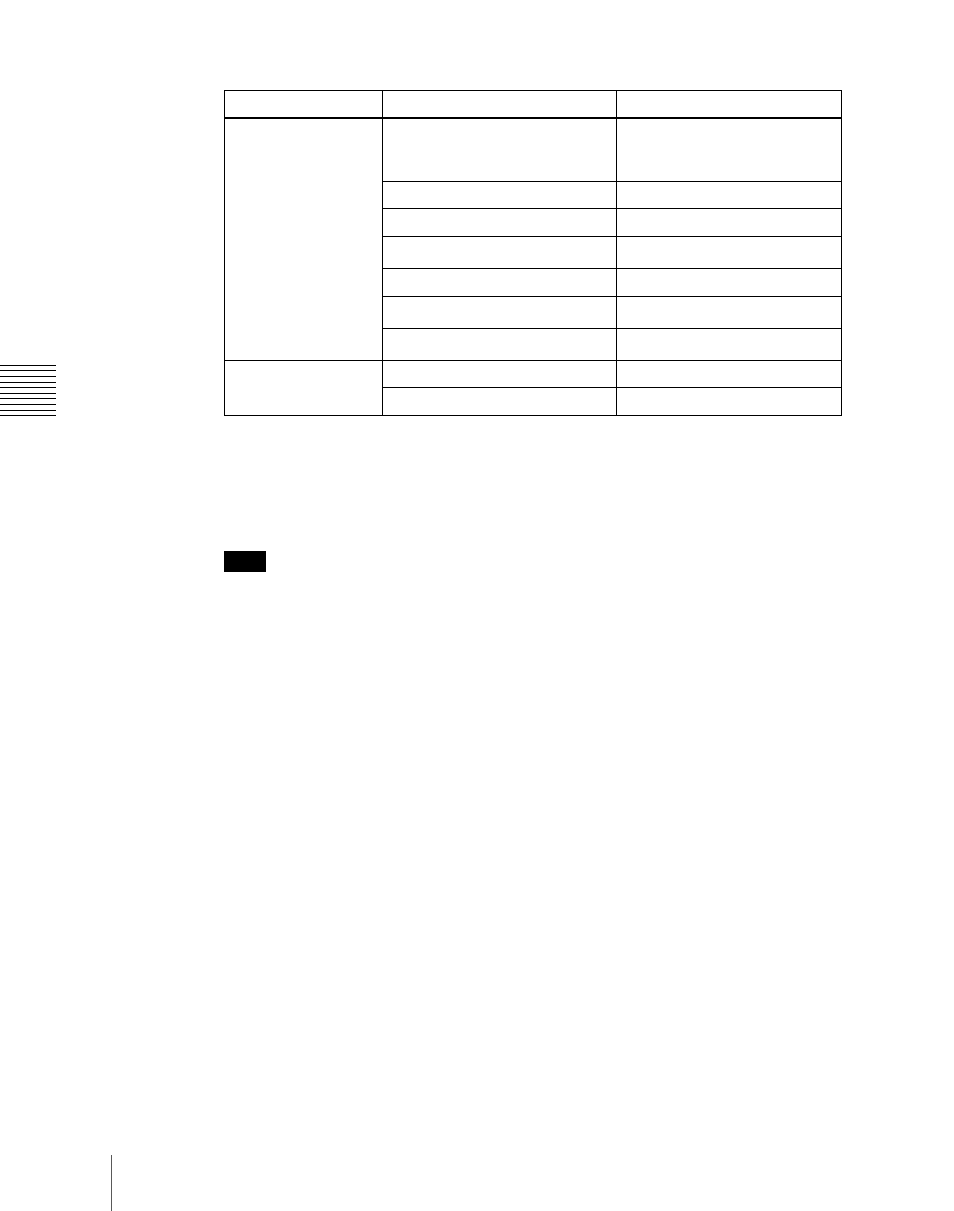Sony Multi Interface Shoe Adapter User Manual
Page 260

260
Creating User Programmable DME Patterns
Ch
The following transition modes are available.
a) Transition according to DME wipe patterns 1202, 1203, or 1204
b) Transition according to DME wipe pattern 1201
c) Transition according to DME wipe pattern 1251
For details, see “Overview” (page 232).
Note
For the following group of effects available in two-channel mode, no user
programmable DME wipe patterns can be created.
Frame in-out, Brick
Notes on creating keyframe effects
When creating a keyframe effect to be used as a user programmable DME
pattern, note the following, depending on the transition mode used.
Notes on single transition mode (one-channel mode)
• Either create the first keyframe image outside the screen area, or set the
image size to zero so that it cannot be seen within the screen.
• Create the last keyframe to be a full-size image.
• In the
select [Single].
Notes on flip tumble (one-channel mode)
• Create the first keyframe image at full size. In the
>Input/Output >Video/Key menu, depending on the direction of the rotation
you want during the transition, press [H Invert] or [V Invert], turning it on.
• Create the last keyframe with the image inverted so the back side is visible,
and with the size at full size.
Channels
Transition mode
Effect group
One-channel mode
Single transition mode
Slide, Squeeze, Door, Flip
tumble, Frame in-out, 2D
trans, 3D trans
Flip Tumble
Flip Tumble, Mosaic, Defocus
Frame in-out
Frame in-out
Frame in-out H
a)
Frame in-out
Frame in-out V
Frame in-out
Picture-in-picture
b)
Picture-in-picture
Compress
c)
Picture-in-picture
Two-channel mode
Dual transition mode
Slide, Squeeze, 3D Trans
Two-channel picture-in-picture
Picture-in-picture
